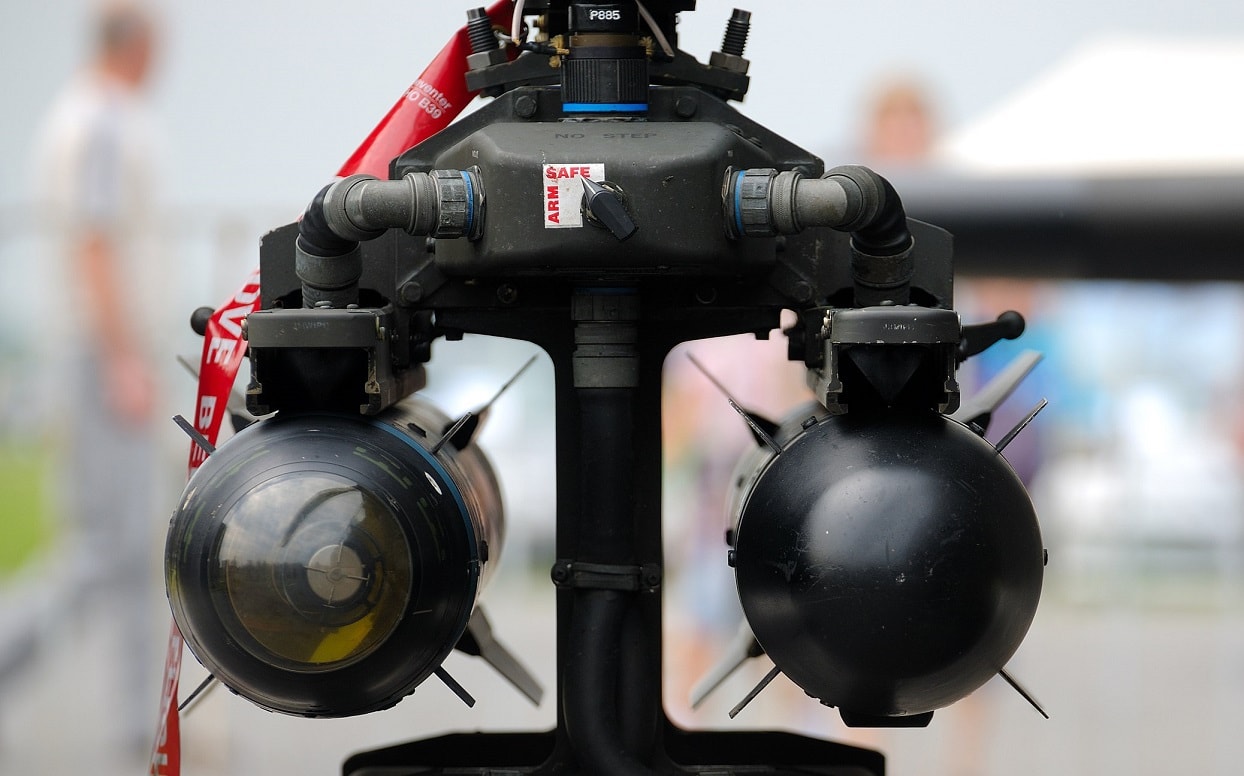Turkey is getting ample credit and accolades for its Bayraktar TB2 combat drones that are embarrassing Russia on the battlefield in Ukraine with numerous kills against Vladimir Putin’s armor. But now the United States has come to the table by considering a plan to sell its own drones to help Ukraine stymie Russia. Four MQ-1C Gray Eagle unmanned systems could be arriving in a “sweetener” of the latest military aid package of $700 million from the Americans. The United States sales opportunity for the Gray Eagles could be canned by Congress at the last minute as the deal is not fully cooked yet.
Armed with Deadly Hellfire Missiles
But this would be an opportunity for the Ukrainians to have another unmanned option to fire anti-tank missiles at Russian forces. Gray Eagles are the Army version of the highly-successful Predator drone.
A Gray Eagle can fly for at least 30-hours and serve in both combat and reconnaissance modes. The main weaponry is comprised of four Hellfire missiles that could take out a tank platoon. The Gray Eagle’s Hellfires would be twice as heavy and more powerful than the Turkish-made MAM-L missiles that are fired by the Bayraktar TB2.
Pentagon Still Discussing the Sale
Reuters, the outlet that broke the story, said it interviewed three sources in the know, but the Pentagon has not verified the potential sale of the drones. Senior defense officials have reportedly been considering the drone sale for weeks.
What About the Need for Training?
The first question that leaps out is how the Ukrainians can be trained on the Gray Eagle when every 24-hours there are changes to battlefield conditions? It typically takes months to train personnel on the General Atomics remotely-piloted vehicle. The Pentagon would have to come up with some solution to the training issue – perhaps sending Ukrainian soldiers to Germany for a crash course.
Russia Would Want to Get Even
The second question is the extent to which this is considered an escalation that would prod Russia into acting more assertively or even attacking NATO partners bordering Ukraine such as Poland and Romania. The Russians have warned against NATO and the United States sending manned fighter planes. That would be a red line for Moscow. But what about unmanned aircraft that will be operated by Ukrainian forces? Would this also be a red line? It could be once the drones blow up a Russian tank.
Who Are the Hawks and Doves?
Third, what about the White House, Pentagon, and the Secretary of State? One condition that is not clear, and it is usually apparent in decision-making when it comes to military crises and wars, is that it is not known who the hawks and doves are in the Biden administration. So far, it seems like the White House, the Department of Defense, and the Department of State have been on the same page when it comes to arming Ukraine. There may be new doves emerge who wish to keep escalation to a minimum and who would lobby against the sale of combat drones to Ukraine.
Some Republicans Are Against Certain Arms Deals with Ukraine
Fourth, we know there are doves in Congress. In late April, 10 Republicans in the House voted against a military aid package led by Reps. Marjorie Taylor Greene of Georgia and Matt Gaetz of Florida. In March, 31 Republican senators voted against military assistance to Ukraine led by more anti-interventionist and dovish senators such as Rand Paul of Kentucky and Josh Hawley of Missouri. These senators are suspicious of American military adventures and often advocate for a foreign policy of restraint.
Debate in the Halls of Government
This combat drone sale will be a tough decision for many policymakers across the U.S. government. On one hand, it makes sense – give the Ukrainians what they need. On the other hand, it seems like it could backfire by provoking Russia into some form of payback. What Russia would actually do is difficult to predict but we can be assured it would certainly sting and enrage the Kremlin. So, this combat drone deal could fall apart, at the very least, it will start a sharply-worded debate on Capitol Hill.
Now serving as 1945’s Defense and National Security Editor, Brent M. Eastwood, PhD, is the author of Humans, Machines, and Data: Future Trends in Warfare. He is an Emerging Threats expert and former U.S. Army Infantry officer. You can follow him on Twitter @BMEastwood.

